| Early Spring Date: | April 28 |
| Late Spring Date: | May 25 |
| Best Dates to See in Spring: | May 1-16 |
Spring: Cape May Warblers are one of the most highly-sought warbler species each spring at Monticello Park. Their numbers are heavily dependent on the spruce budworms in the boreal (far northern) forests where they breed. Each year when the budworms are scarce, the warblers tend to be scarce the next spring. When the budworms are plentiful, the warblers are plentiful the next year. In 2005, no Cape May Warblers were seen or heard at Monticello. In 2009, single sightings occurred on only three different days, and this could have been the same bird. In recent years, Cape May Warblers have been much more common and have typically been seen during the first half of May.
Fall: Cape May Warblers are not common at Monticello during the fall. On average, about 2 are seen each year, but in some years, none have been recorded. The most likely time to see one is during the second and third weeks in October.
Where to See Them in the Park
Cape May Warblers sometimes forage in the canopy. However, they often come down lower, and they frequently go into the stream and then preen in a nearby bush.
Physical Description
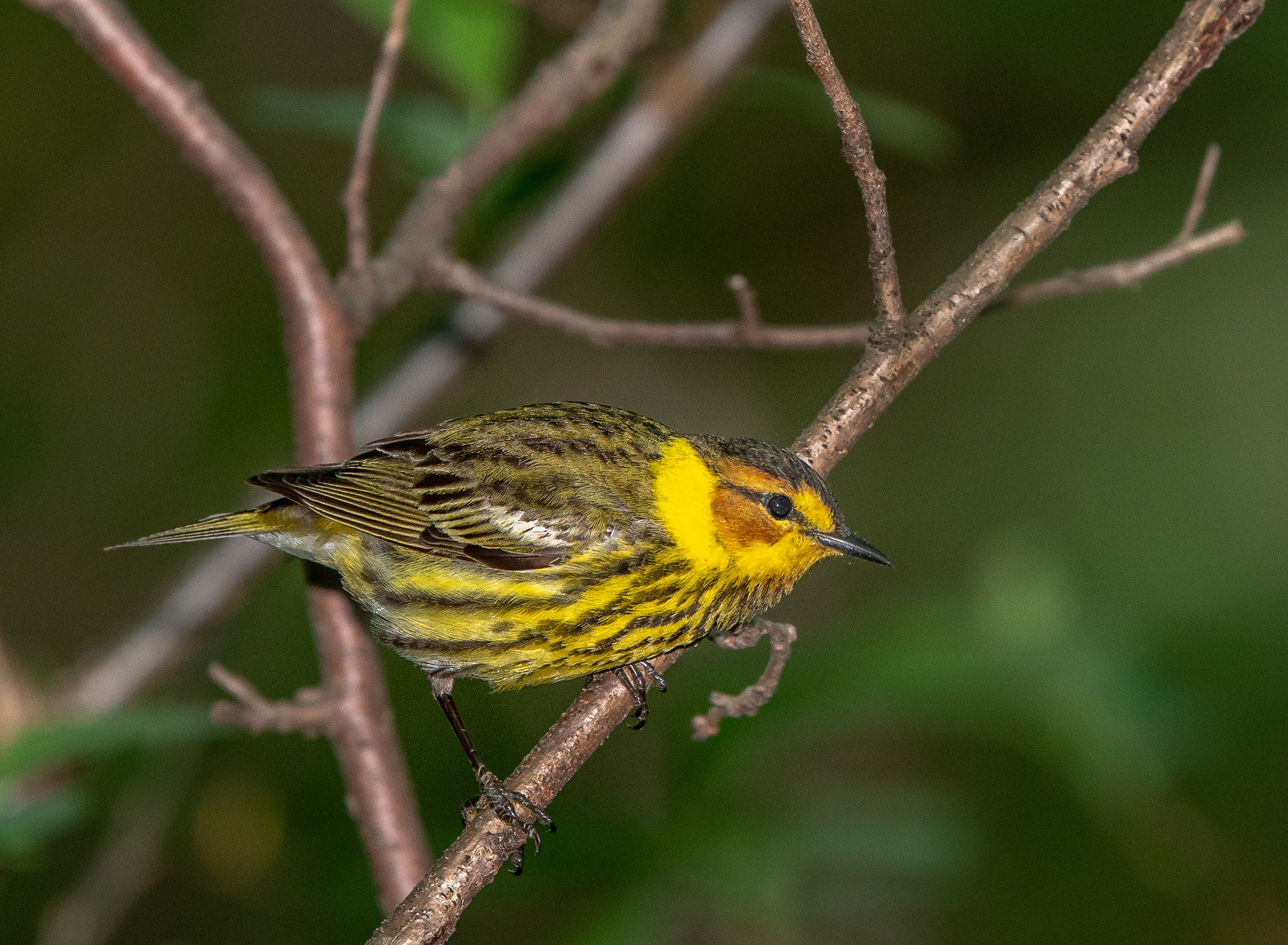
The males are mostly yellow, with prominent black "tiger stripes" on the flanks. They have a brick-red patch on the cheek and a white patch on the wings. The cap is dark, and on some birds, appears to be black. They have a black line through their eye and a yellow line over it. The back is olive with faint black streaks.
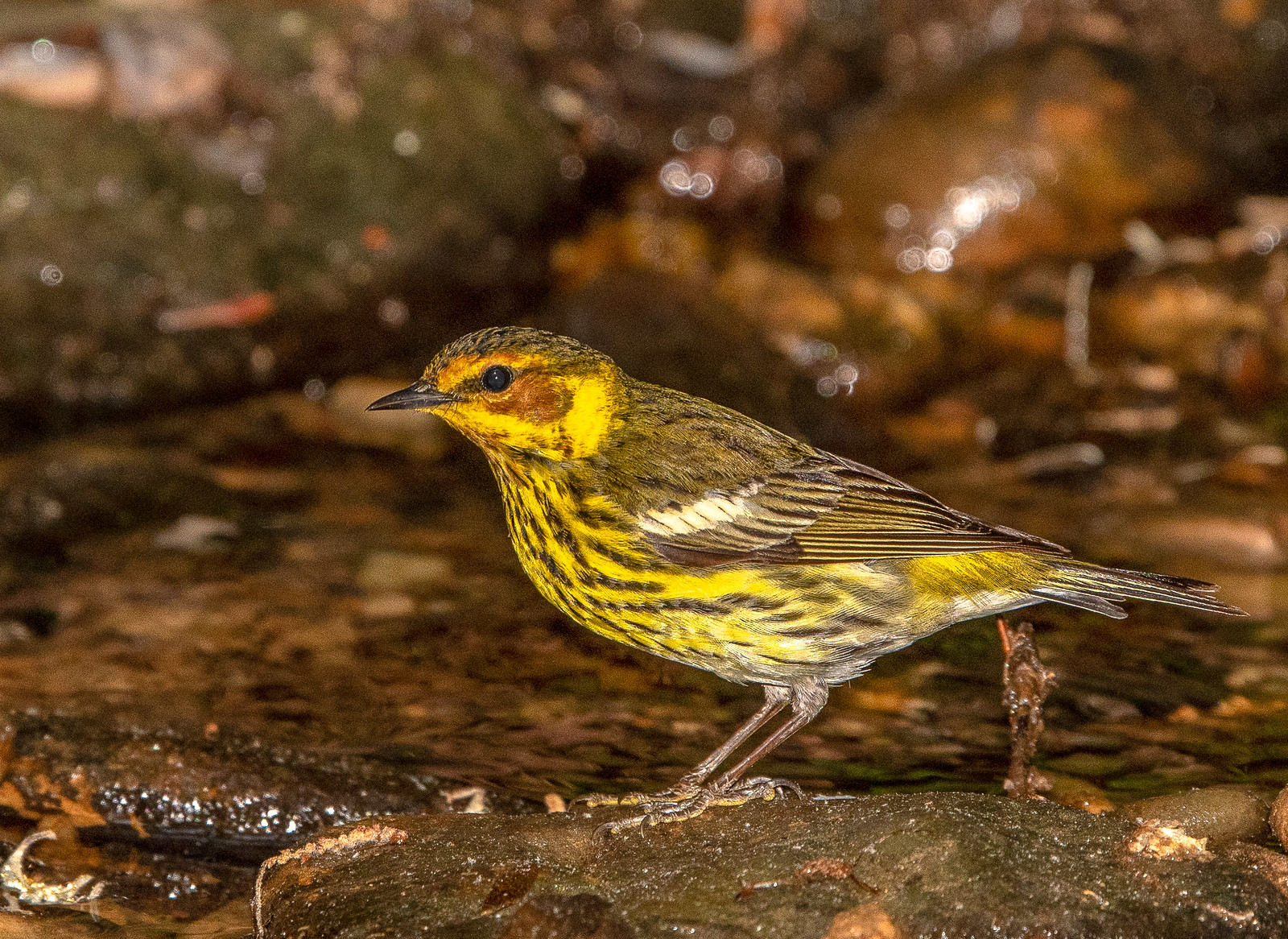
Cape May Warblers are "yellow-rumped warblers", along with the Palm, Magnolia, and the warbler called the Yellow-rumped.
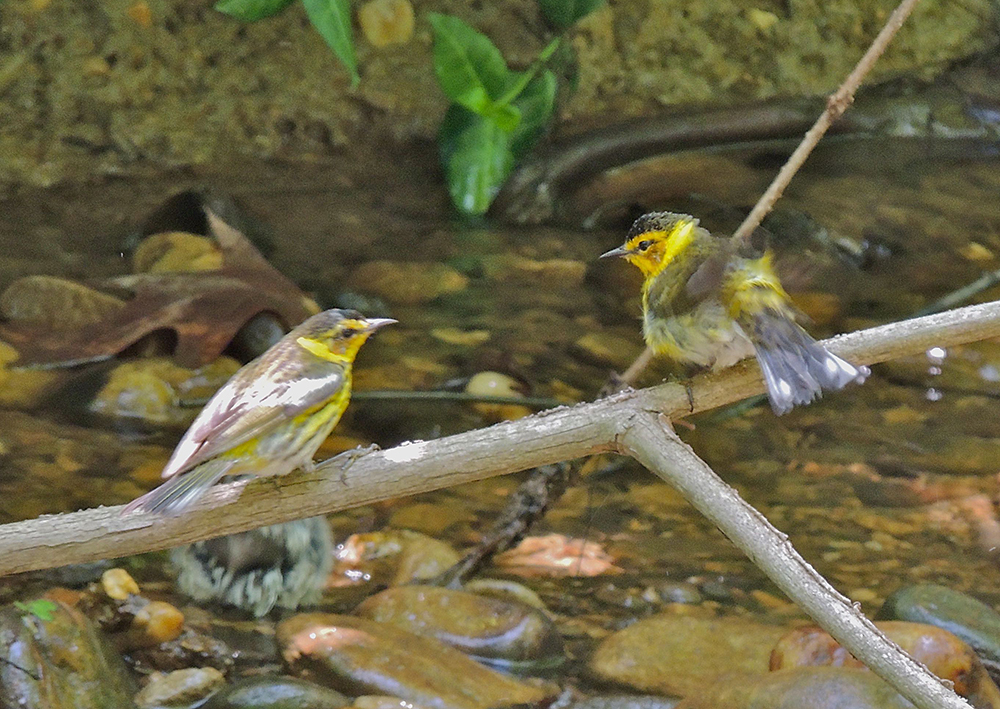
On rare occasions, more than one will go into the stream together.
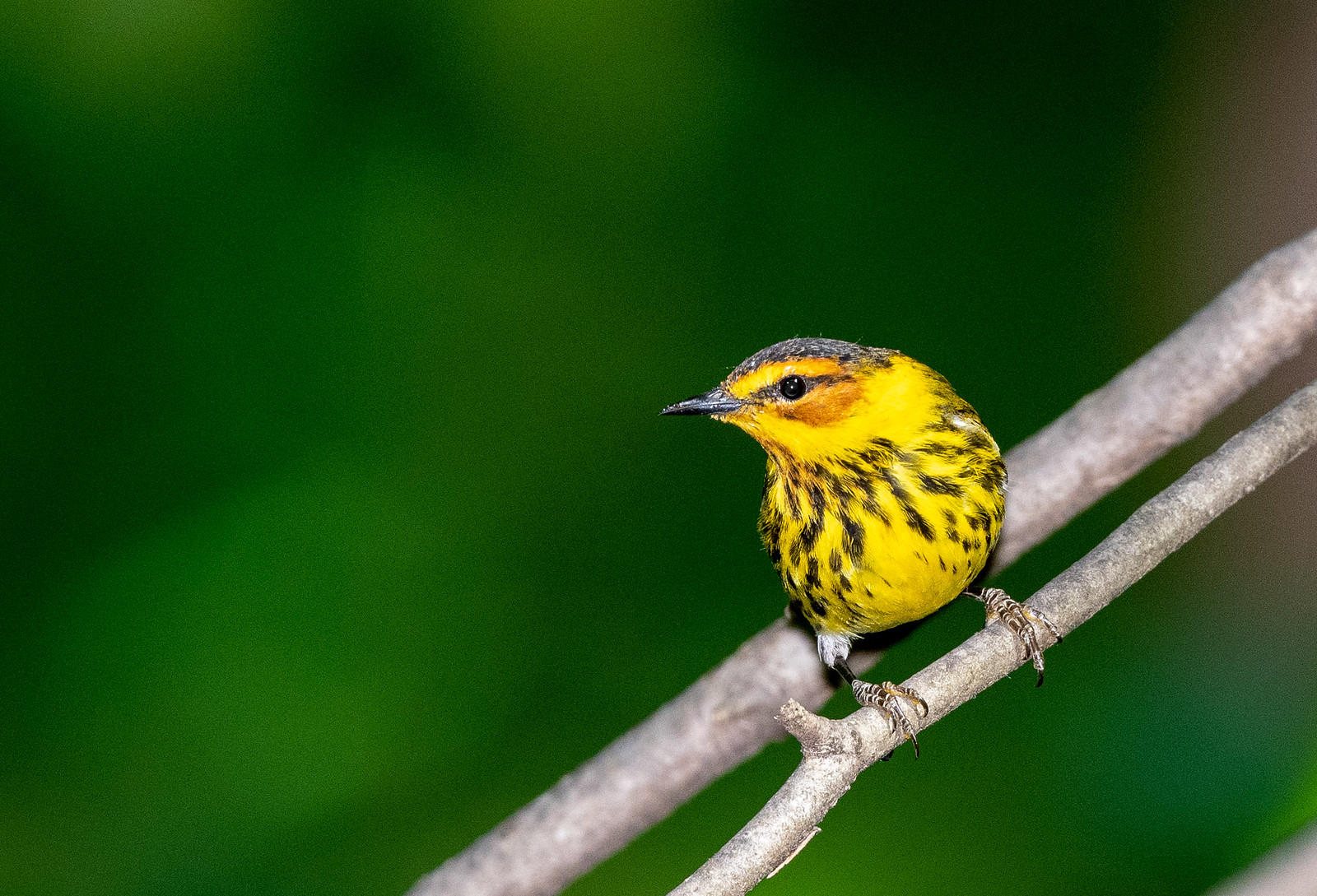
The red cheek patch on some males is not as bright or large as on others. These might be immature birds. They still have the have tiger stripes.
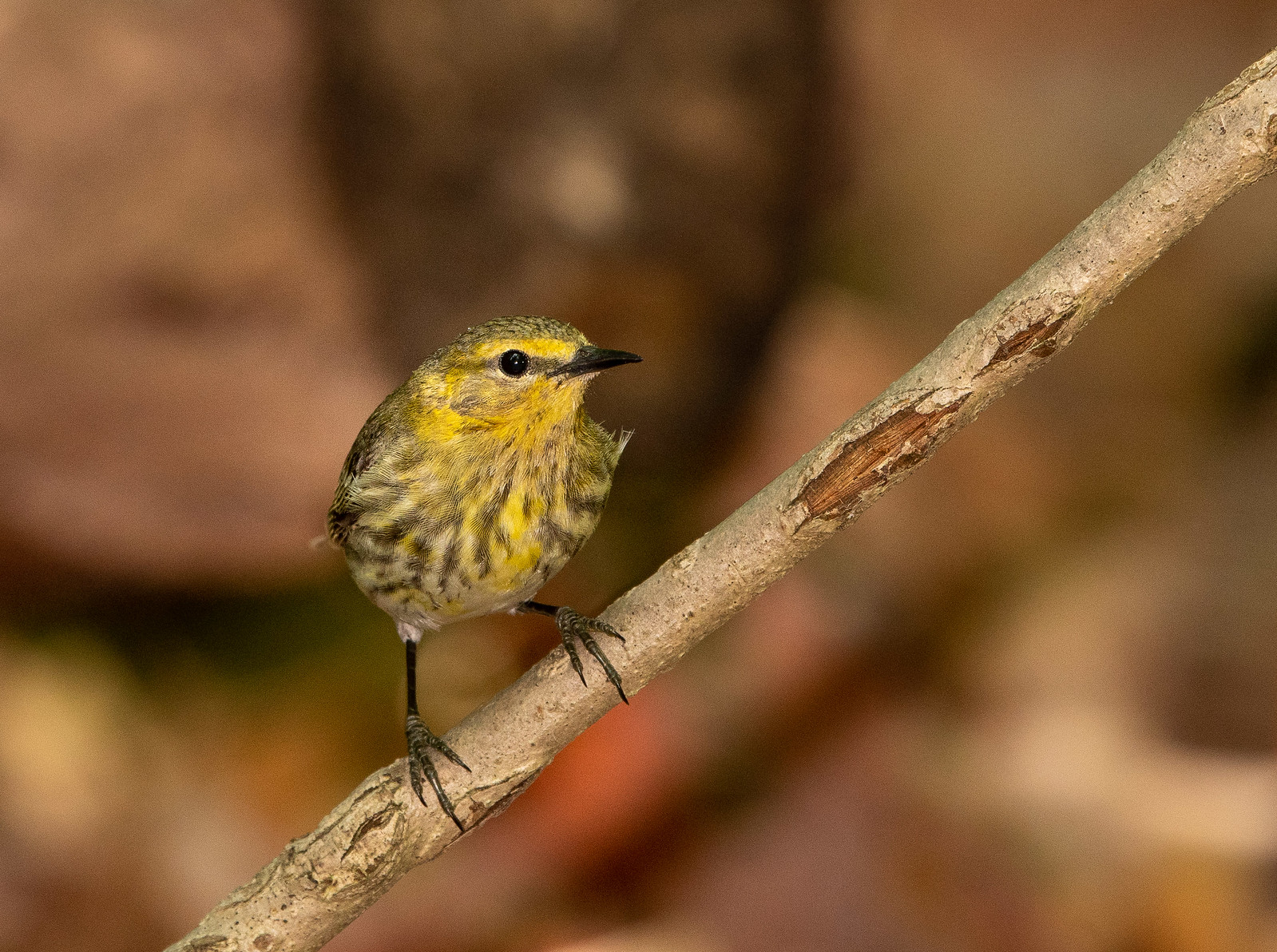
Female Cape May Warblers can be difficult to identify and are sometimes confused with Yellow-rumped Warblers. Rather than having a red cheek and a black cap, both the cheek and the cap are olive-gray. They do not have nearly as much yellow below as the males, but they have tiger stripes on their breast and sides. The tiger stripes are the best fieldmark.
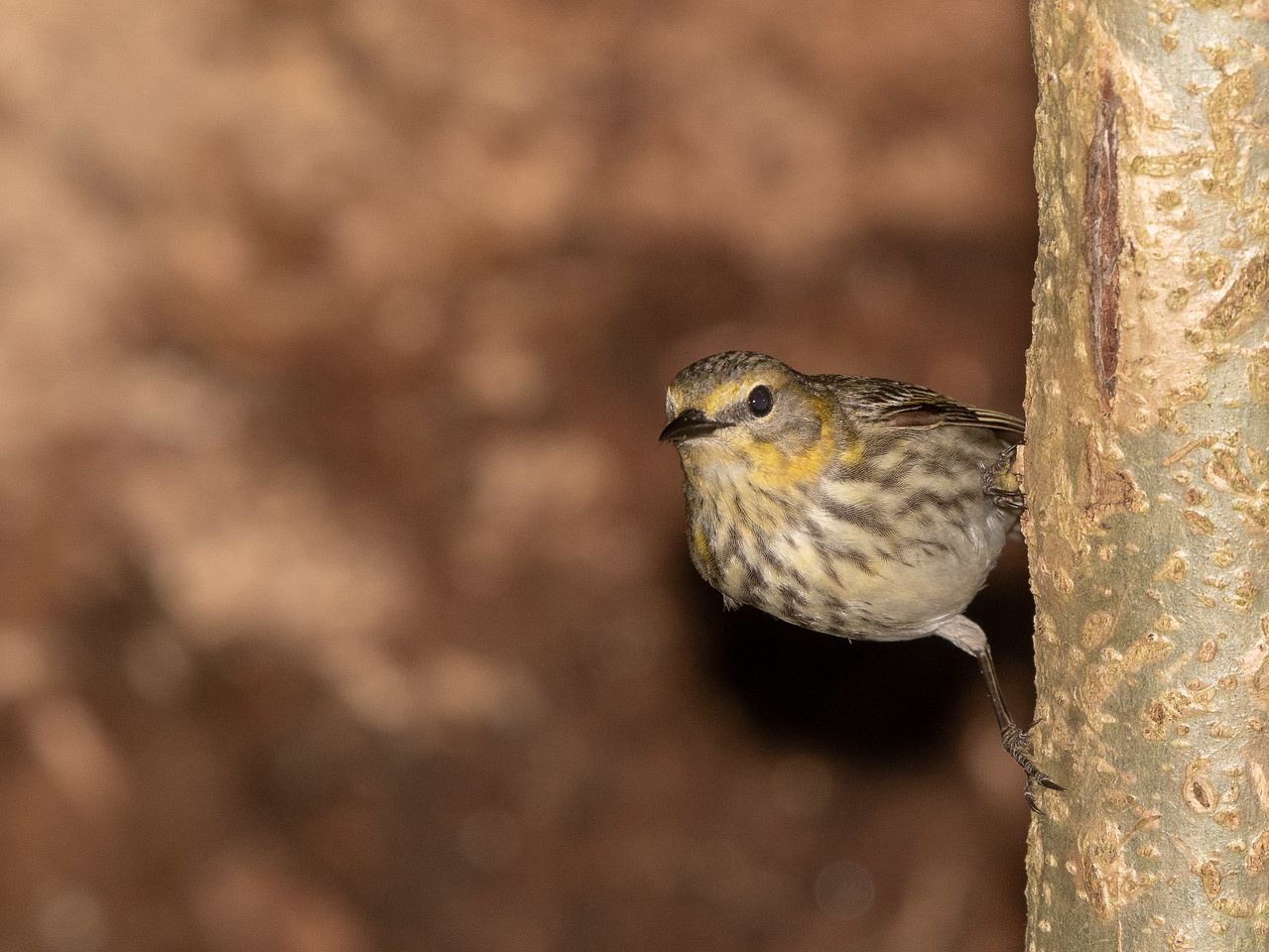
Some can be very pale below.
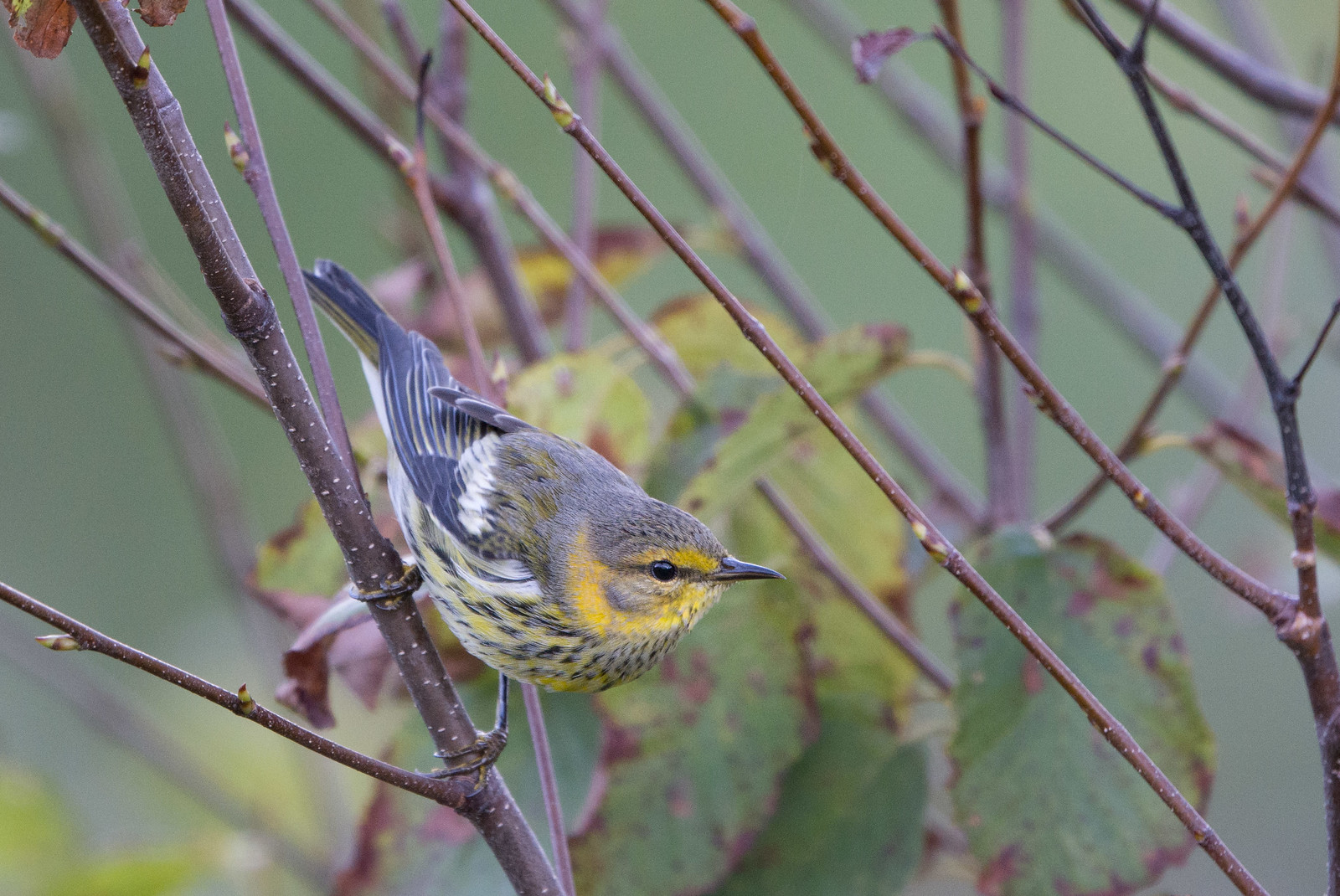
Fall: Fall adult males are much paler than spring males. Most lose the red on the cheek.
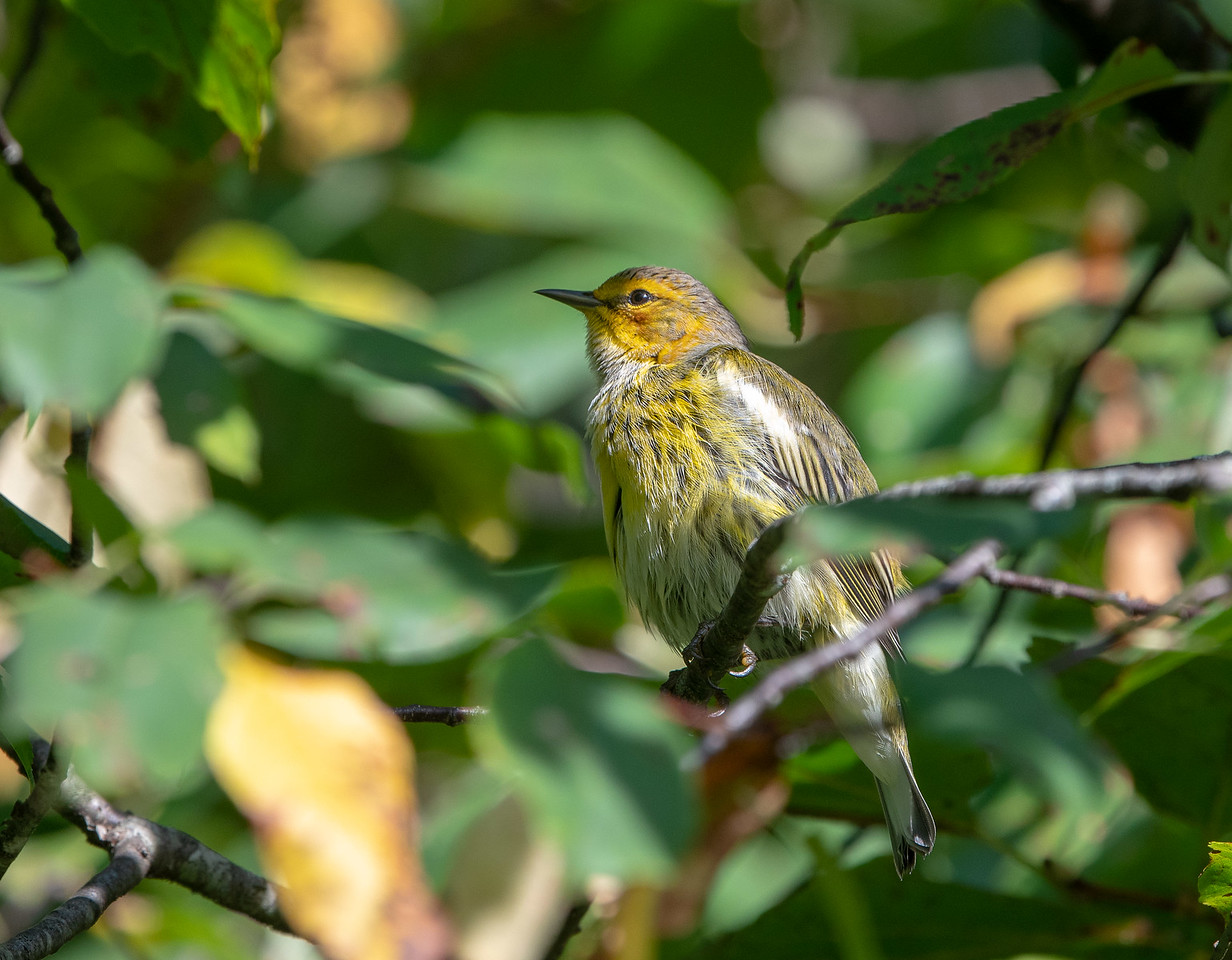
However, some males retain some red on the cheek, as well as more extensive yellow plumage below.
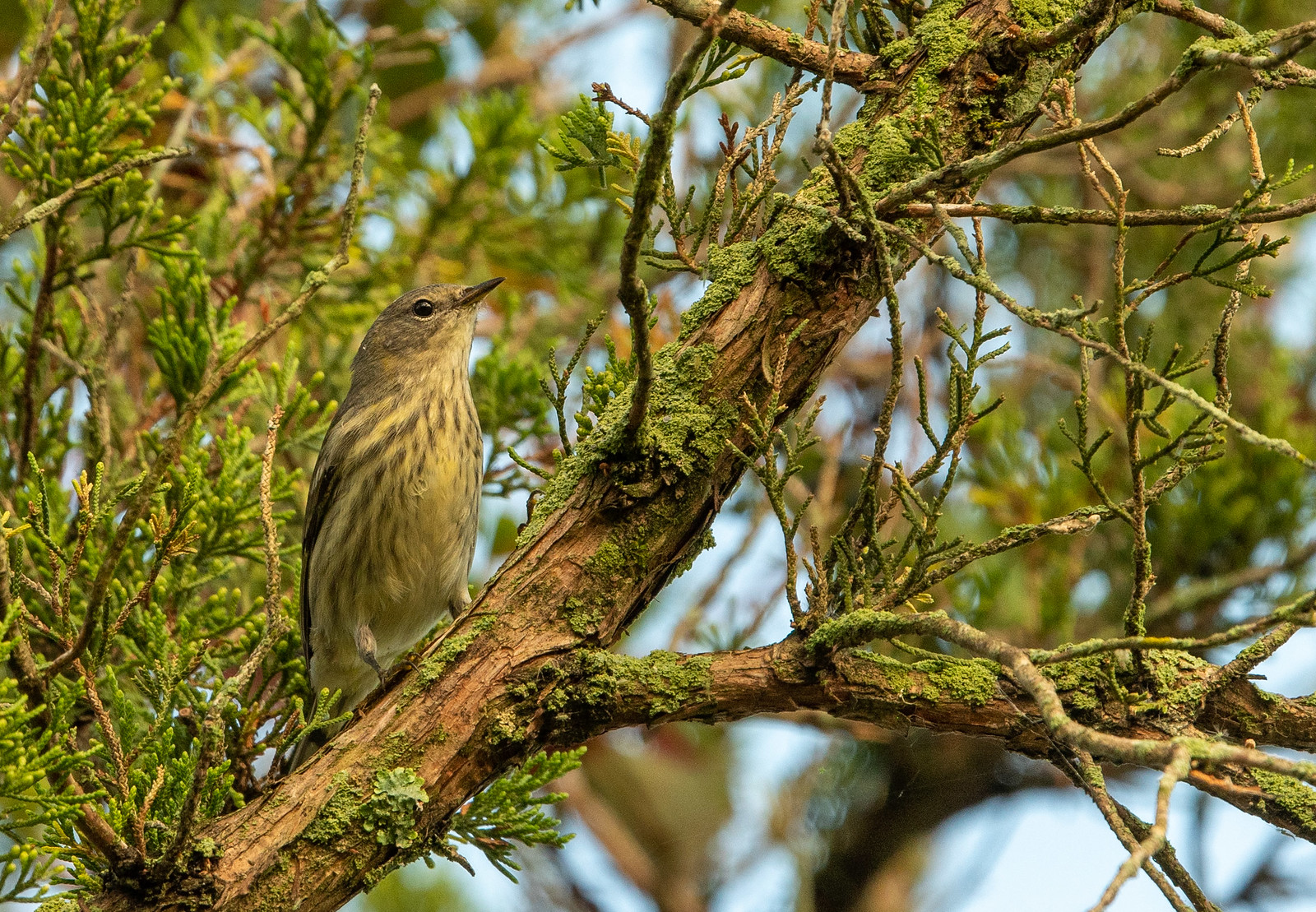
Fall adult females are paler than the adult males, and their facial markings are not as prominent. First-fall males look similar to fall adult females.
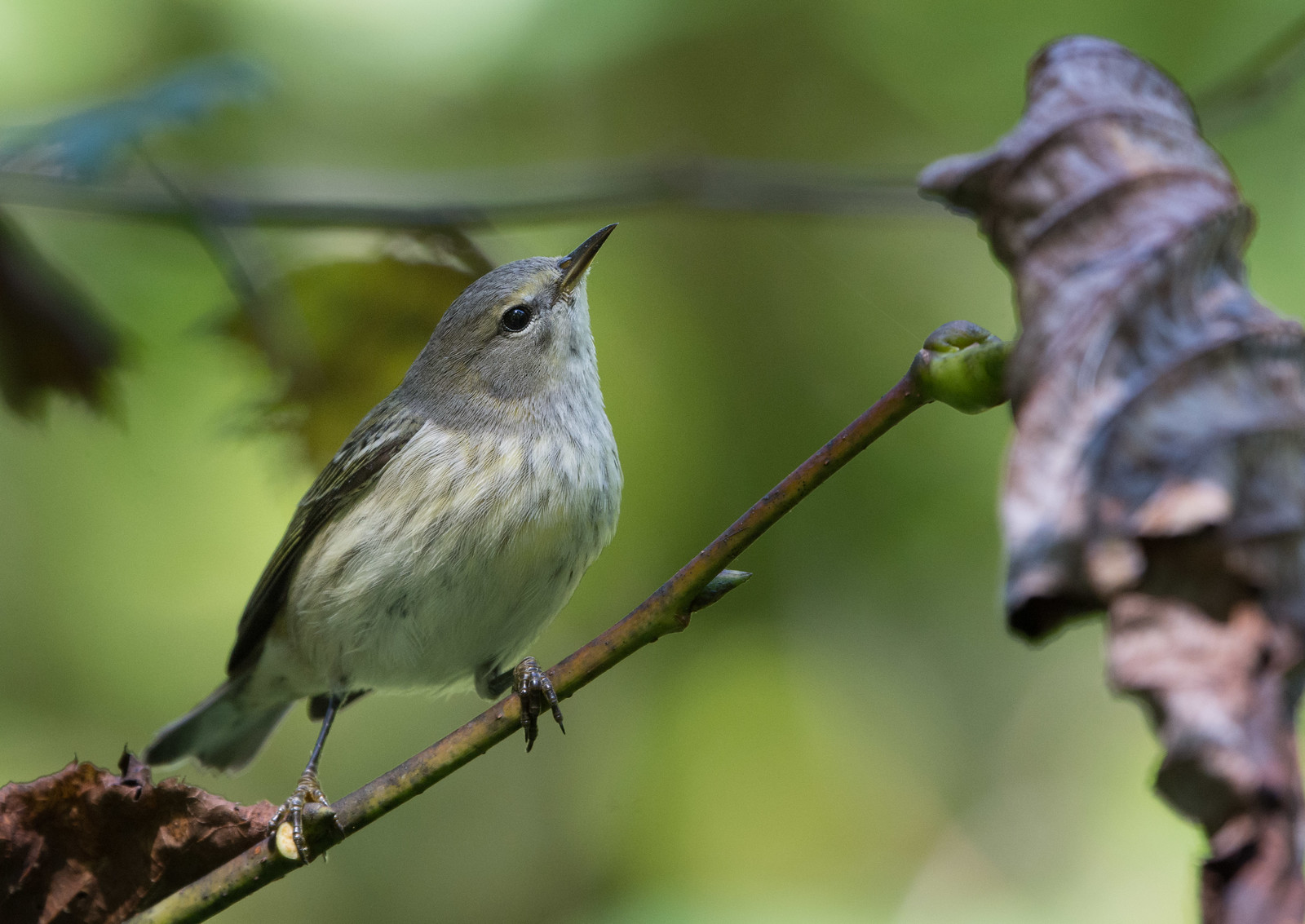
First-fall females are very drab and mostly grayish. The yellow rump can help in identification in all plumages, although on some drab first-fall birds it can appear to be greenish-yellow.
Vocalizations
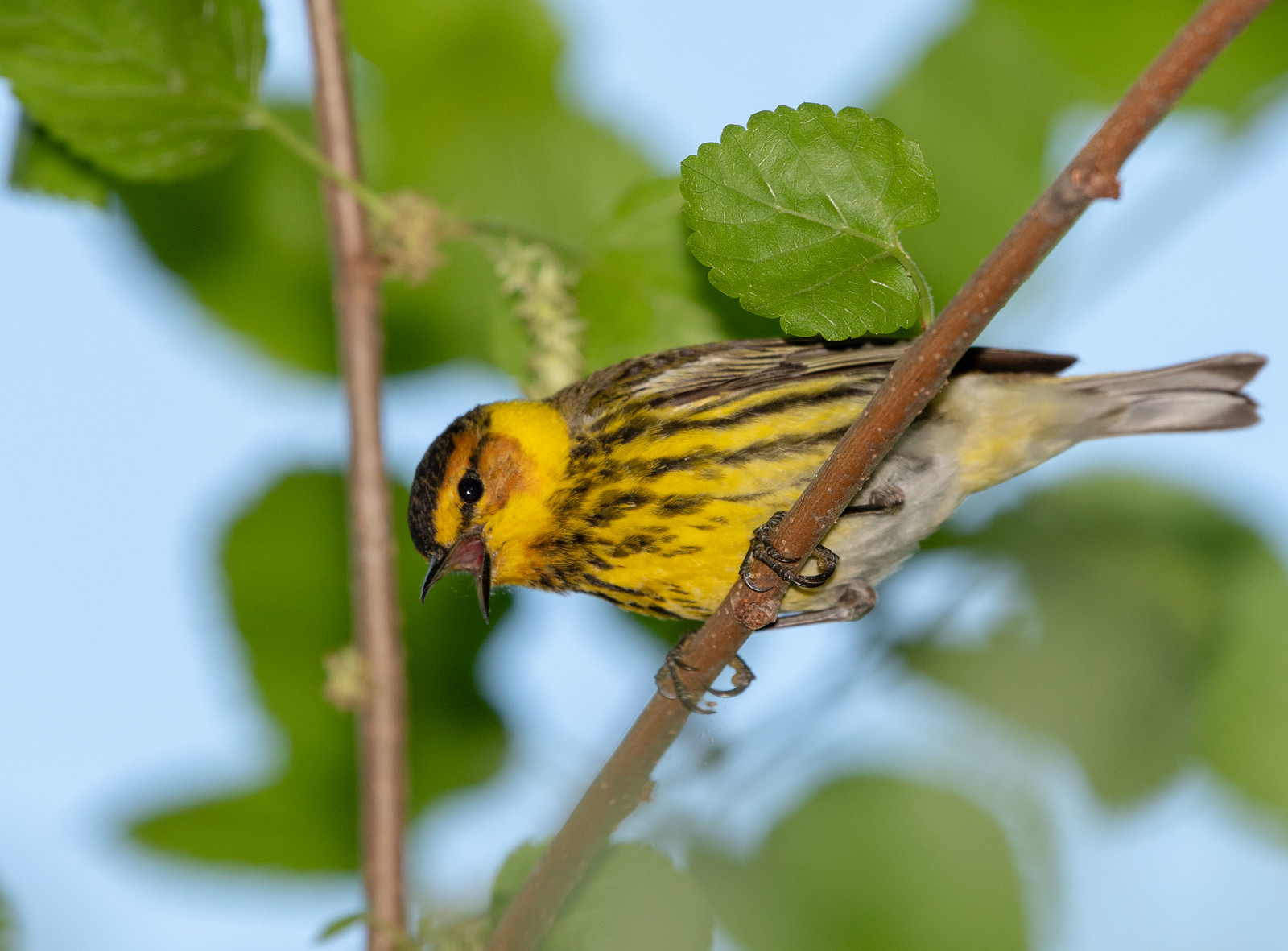
The song of the Cape May Warbler is a high-pitched series of single notes, usually sung from the canopy — tink-tink-tink-tink-tink.
Hear the song of the Cape May Warbler.
Notes
Cape May Warblers were first described by Alexander Wilson in Cape May, New Jersey, but they are not commonly seen there. During the winter, they feed on nectar and small fruits, which they puncture with their sharp bill. They use their semi-tubular, brushy-tipped tongue for extracting nectar — an ability unique among warblers. Many songbird species change their diet during the winter when their energy demands are lower. A lot of energy is needed for migrating to breeding grounds and raising young, which is why their diet during the spring and summer is composed mostly of high-protein food such as insects and other arthropods. They do not use as much energy on their wintering grounds, so they can survive on food with less protein, including fruit and seeds.
Origin of Names
Common Names: Cape May because the first specimen was described in Cape May, New Jersey. The New World Warblers were named for their similar appearance to European warblers, to whom they are not related. Most of the New World warblers do not warble (sing continuously with notes that change frequently).
Genus Name: Setophaga means moth eating.
Species Name: Tigrina means striped like a tiger, from the streaks on the underparts.
Cape May Warbler video footage
Return to the Index
